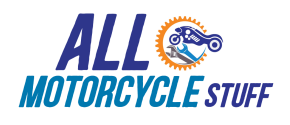CV joint boots protect critical components from contamination and wear. A small tear can quickly lead to joint failure over time. Replacing the boot early preserves the inner and outer joint integrity. Technicians emphasize timely boot replacement to avoid costly axle repair. Preventative maintenance ensures smooth power transfer to the wheels consistently. Early intervention keeps the drivetrain functioning safely and reliably. Understanding the process encourages vehicle owners to act before damage occurs. Proper boot care extends CV joint lifespan and overall vehicle reliability. Timely replacement reduces vibration, noise, and drivability issues effectively.
Assessing Boot Condition
Visual inspection identifies cracks, splits, and hardened areas on the boot. Flexing the boot checks for hidden weakness or material fatigue carefully. Signs of grease leakage indicate the protective barrier has been compromised. Technicians examine clamps for security and signs of loosening consistently. Assessment determines if replacement is needed before joint damage begins. Correct evaluation prevents contamination from dirt, water, and debris efficiently. Early detection saves time and cost of major repairs significantly. Boot assessment is essential for safe and reliable vehicle operation. A thorough inspection by Auto Repair in Warwick, RI supports informed maintenance decisions and early intervention.
Removing the Old Boot
The axle and joint must be accessed by lifting the vehicle safely. Clamps and retaining rings are removed to free the damaged boot carefully. Any remaining grease is cleaned from the joint for proper reapplication. Outer and inner CV joint components are checked for wear and damage. Proper removal prevents accidental damage to the CV joint components reliably. Technicians handle the joint gently to maintain alignment and function. Old boots are discarded to avoid contamination and improper reuse consistently. Complete removal prepares the axle for accurate installation of the new boot. Clean preparation ensures long-lasting protection and lubrication effectiveness reliably.
Final Checks
After installation the joint is rotated to confirm full movement easily. Technicians inspect for leaks and ensure clamps are secure consistently. Axle and suspension components are reassembled to restore normal vehicle operation. Any residual grease is wiped from surrounding areas to avoid mess. Final checks confirm that the boot protects the joint effectively under load. This step ensures proper alignment, lubrication, and long-term joint function reliably. Testing prevents early failure and maintains safe and smooth driving conditions. Correct verification completes the preventative maintenance procedure thoroughly and efficiently. Final inspection supports reliable drivetrain performance and enhanced vehicle longevity consistently.
Conclusion
Boot replacement is a cost-effective preventative maintenance strategy consistently. Early replacement protects CV joints from dirt, water, and wear. Proper removal, preparation, installation, and verification ensure successful results reliably. Timely maintenance prevents costly axle repair and extends drivetrain lifespan. Careful boot service improves drivability and reduces vibration and noise. Regular inspection allows early detection of potential joint compromise effectively. A well-executed boot replacement enhances overall vehicle reliability and safety. Following methodical procedures maintains smooth power transfer to the wheels efficiently. Preventative care ensures CV joint longevity and avoids unexpected breakdowns reliably.

